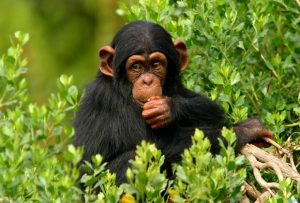The Formation of Ngorongoro Crater: A Geological Wonder
Nestled within the Ngorongoro Conservation Area in Tanzania lies the remarkable Ngorongoro Crater, a geological marvel that has captivated visitors for centuries. This natural wonder formed millions of years ago and continues to awe visitors with its breathtaking beauty and unique ecosystem.
The Geological History of Ngorongoro Crater
The Ngorongoro Crater is a large, unbroken volcanic caldera that was formed approximately three million years ago when a massive volcano erupted and collapsed on itself. This catastrophic event created a vast crater with a diameter of about 12 miles and a depth of over 2,000 feet, making it one of the largest calderas in the world.
Over time, the crater floor has transformed into a diverse and self-contained ecosystem, with lush grasslands, forests, and a permanent lake at its center. The fertile soil and abundant water sources within the crater have attracted a wide variety of wildlife, including lions, elephants, hippos, and flamingos, making it a prime destination for safari enthusiasts and nature lovers.
The Ngorongoro Crater is also home to the Maasai people, who have lived in the area for centuries and continue to graze their livestock within the crater walls. Their harmonious coexistence with the wildlife in the crater is a testament to the delicate balance of nature and the importance of conservation efforts in preserving this unique ecosystem.
Factors Contributing to the Formation
Several key factors contributed to the formation of the Ngorongoro Crater, including the geological processes of volcanic activity, erosion, and tectonic movements. The initial eruption of the volcano led to the collapse of the caldera, creating the distinctive circular shape that we see today.
The volcanic soil within the crater is rich in nutrients and supports a wide range of plant life, which in turn sustains the diverse array of animals that call the crater home. The presence of water sources, such as the Ngoitoktok Springs and Lake Magadi, provides essential resources for both wildlife and vegetation, further enhancing the biodiversity of the area.
The surrounding highlands of the Ngorongoro Conservation Area also play a crucial role in the formation and preservation of the crater. The steep slopes of the crater walls help to contain the ecosystem within its boundaries while also providing a stunning backdrop for the panoramic views of the crater floor.
In conclusion, the Ngorongoro Crater stands as a testament to the powerful forces of nature and the delicate balance of ecosystems. Its unique geology and rich biodiversity make it a must-see destination for travelers seeking to immerse themselves in the wonders of the natural world. To experience the beauty and wonder of Ngorongoro Crater firsthand, book a safari tour with Sunset Africa Safari by contacting info@sunsetafricasafari.com.


